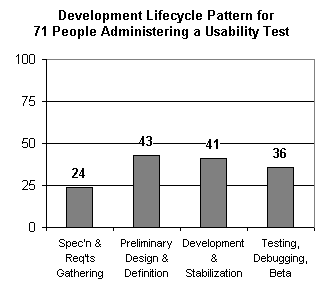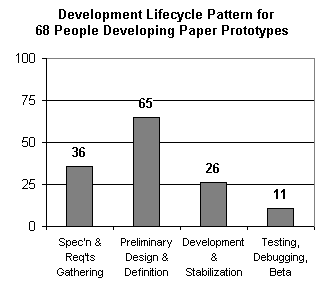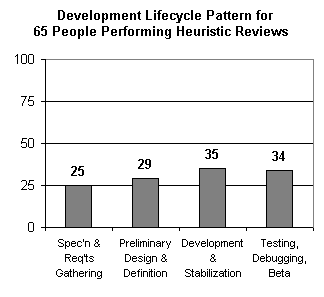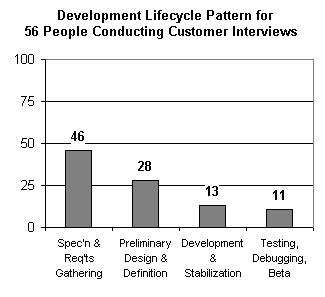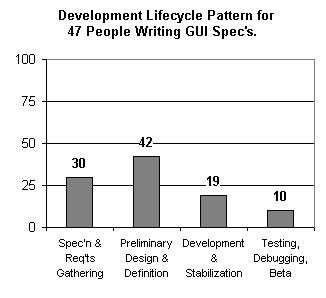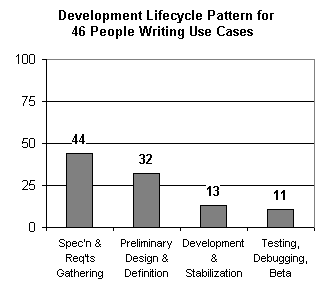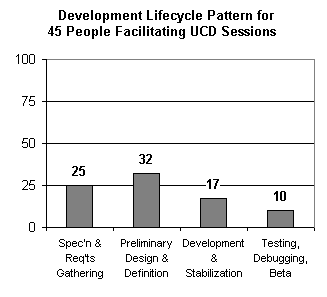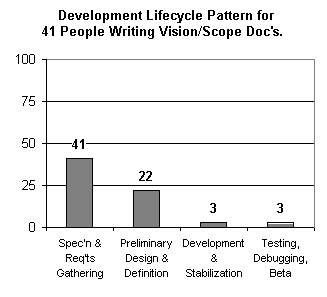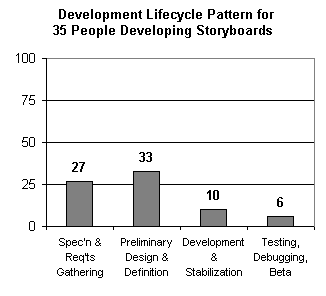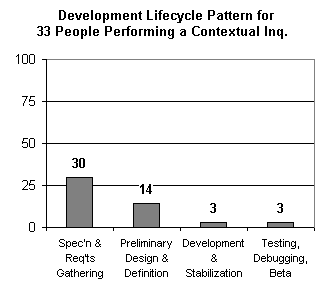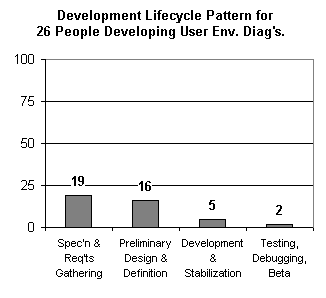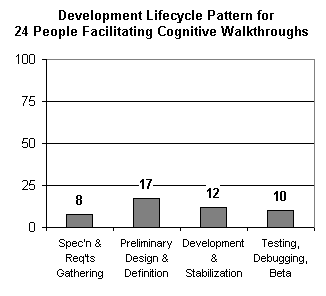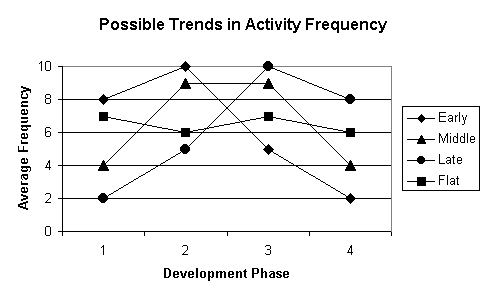 Lifecycle
Profiles
Lifecycle
ProfilesWhat Activities | How Many of Each | Development Lifecycle Timing | Home
| Best Seller | Runner Up | Sweet Spots for Each Activity | |
| Specification and Requirements | Conducting Customer Interviews (46) | Writing Use Cases (44) | Conducting Customer Interviews
(46)
Writing Use Cases (44) Writing Vision Scope Documents (41) Performing a Contextual Inquiry (30) Developing User Environment Diagrams (19) |
| Preliminary Design and Definition | Developing Paper Prototype (65) | Administering a Usability Test (43) | Developing Paper Prototype (65)
Administering a Usability Test (43) Writing GUI Specifications (42) Developing Storyboards (33) Facilitating UCD Sessions (32) Facilitating Cognitive Walkthroughs (17) |
| Development and Stabilization | Administering a Usability Test (41) | Performing a Heuristic Review (35) | Performing a Heuristic Review (35) |
| Testing, Debugging, and Beta | Administering a Usability Test (36) | Performing a Heuristic Review (34) |
The numbers presented in the above table represent the number of respondents who reported performing an activity in a specific development phase. For example, 46 respondents reported conducting customer interviews in the Specification and Requirements phase. Activities were divided into three categories:
Best Seller - the most frequently conducted activity for a development phase
Runner Up - the second most frequently conducted activity for a development phase
Sweet Spots - the development phase where each activity was conducted most frequently.
We were interested in seeing how usability practitioners were deploying UCD activities across the development lifecycle. We created a sample development lifecycle by breaking the development lifecycle into four (4) broad phases. This was done to avoid any preconceptions or bias that respondents may have had about traditional models like The Waterfall Model and any of its iterative or recursive incarnations. The four (4) phases we used were:
The above table presents the main results for activity deployment, specifically, for any given development phase, what are the most popular UCD activities. Among the most popular activities, there is some redundancy with usability tests and heuristic reviews occurring in the list three (3) and two (2) times, respectively. There is also a good variety in Best Sellers and Runner Ups with the inclusion of customer interviews, use cases, and paper prototypes.
In terms of conducting activities late in the lifecycle, there were no UCD activities that occurred most frequently in the Testing, Debugging, and Beta phase; this is why the Sweet Spot cell for this phase is empty. The Best Seller and Runner Up cells have activities in them because these cells present the most frequently and second most frequently conducted activity for this phase.
 Lifecycle
Profiles
Lifecycle
ProfilesWe wanted to see if there were patterns in UCD activity deployment across the development lifecycle. We expected to see activity frequencies fall into one of four patterns. An example of each pattern is shown in the following graph.
We expected to see a strong bias for "Early" patterns due to the stereotypically up-front nature of UCD activities. The majority of activities have frequencies that are early or middle in profile. Two activities were notable exceptions to this trend:
